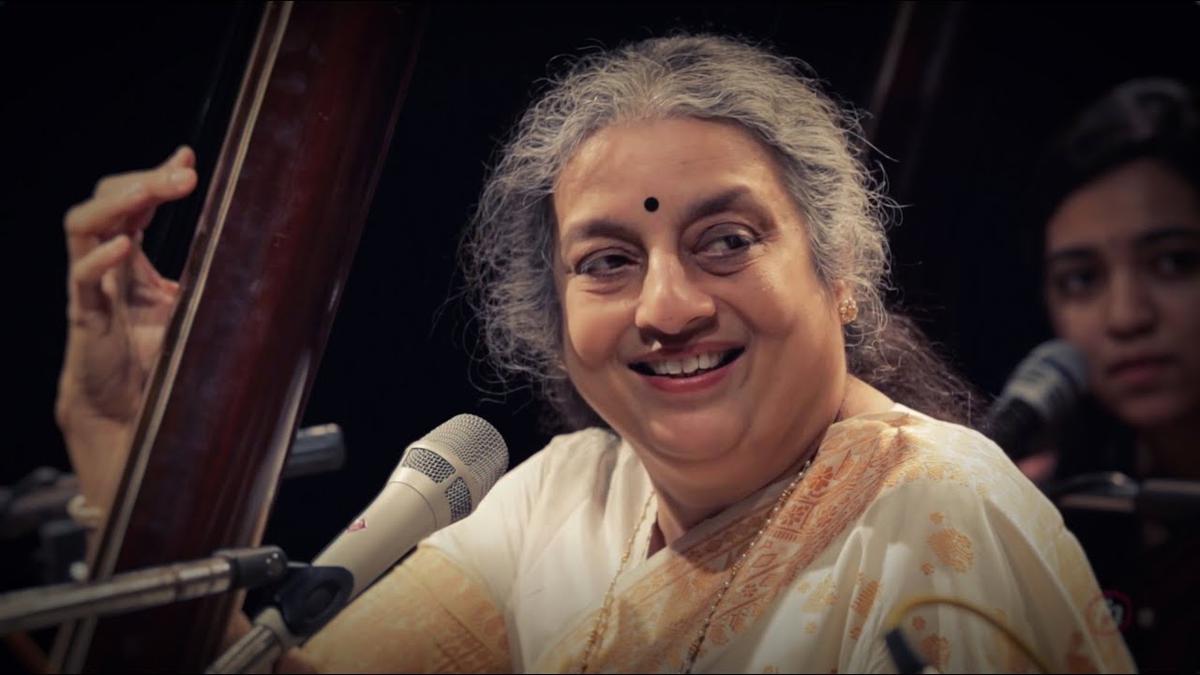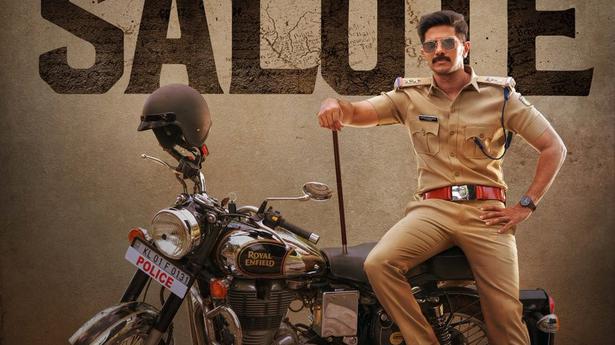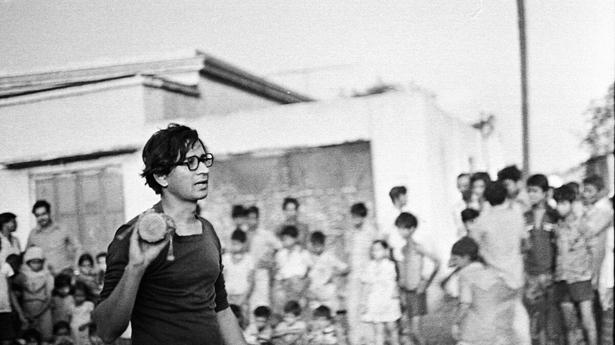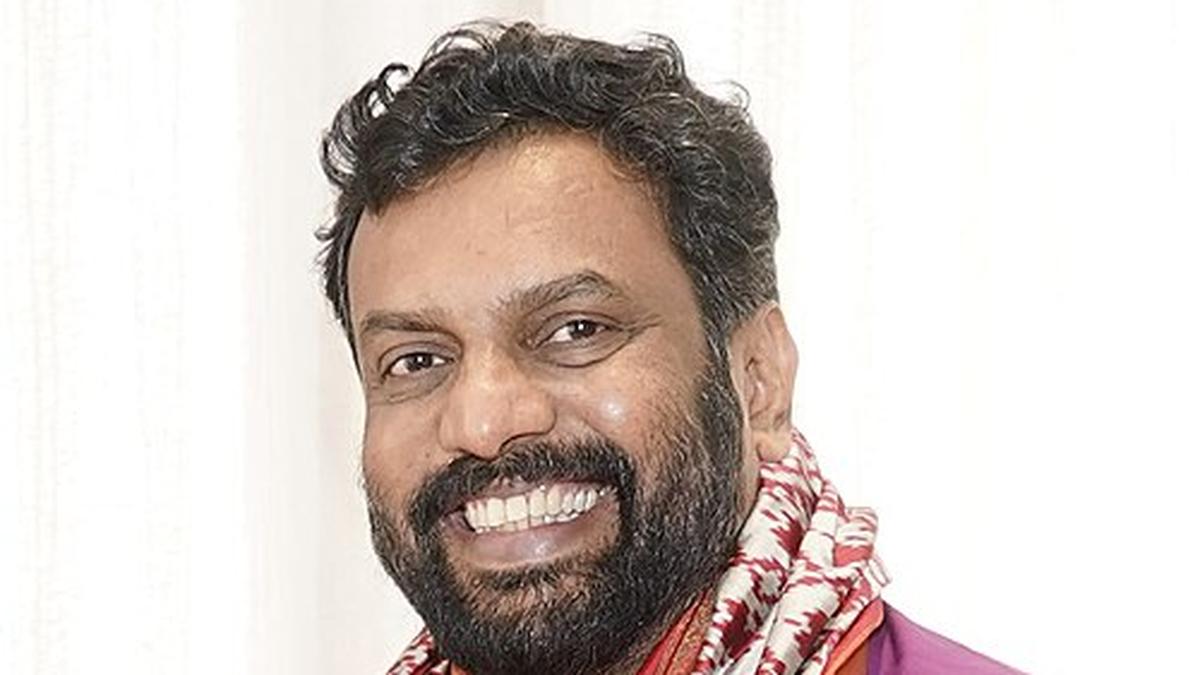The 11th century Rajarani temple, one of the finest examples of Odia architecture, in Bhubaneswar, formed a spectacular backdrop for the Rajarani music festival, presented by the Odia Language, Literature and Culture Department, Government of Odisha in association with the Odisha Sangeet Natak Akademi. The statues of Ashta Digpalas guard the eight cardinal directions of the temple that has no presiding deity..
The open-air festival is held in the temple premises. The entire area decorated with crafts from Pipli, appeared bright and colourful.
Flute recital by guru Jabahar Mishra.
| Photo Credit:
Special Arrangement
The three-day festival opened with the flute recital by guru Jabahar Mishra. A regular performer on Akashvani and Doordarshan, Cuttack, Jabahar Mishra heads the Department of Flute at Utkal University of Culture, Bhubaneswar. Assisted by his disciple Videh Bhushan on the flute and Biswaranjan Nanda on the tabla, he began with a detailed alap of Bageshri. For the Ati-Mandra vistar, in the lower octave, he opted for a longer and thicker bansuri and delineated the raag in detail. With the punctuation of a Mohra, he picked up the original instrument and proceeded to the vilambit (slow) composition set to Rupak taal of seven beats time cycle. The composition went through a complete round (avritti) of 14 beats with two ‘sam’. This is called ‘Do-Munhi Gat’ in musical parlance.
The second composition was in the medium tempo of Teentaal and was adorned with a variety of taans. He then played a popular vocal bandish ‘Dagar chalat pakad linhi baiyaan marori’ in Drut Ektaal and, finally, played a fourth composition, shifting to a faster Teentaal for the sake of convenience in Jhala. He could have easily avoided this and played another raag instead, before concluding with the folkish Odia dhun in Dadra.
Ashwini Bhide Deshpande, the reputed representative of the Jaipur gharana, was the senior artiste at the inaugural evening. Ashwini is also a versatile composer, who has brought out books of her compositions. She presented the Bada Khayal ‘Aali mora jiya sukh bhayo, kripa kinhi mope Krishna madho mukund’ in Jaijaiwanti, set to slow Jhaptaal, which she combined with her own composition, ‘Sundar shyam salone…’ in Drut Ada Chautaal, a challenging taal of 14 beats.
Accompanied by Vinay Mishra on the harmonium, Yati Bhagwat on the tabla, and her talented disciple Shivani Haldipur Kalliyanpurkar providing vocal support, she regaled the audience with a melodious rendition of this late evening raag, rarely heard in concert circuits. Raag Nand was her second choice with ‘Ajahoon na aaye Shyam’, the popular bandish in Addha Theka first, and then for the taan section took to regular Teentaal. The abhang by Sant Jnaneshwar underlining the ecstasy of ishwar darshan was soulfully sung as a concluding piece, but on public demand she had to sing dadra in Bhairavi too.
Sarangi recital by Ustad Sabir Khan.
| Photo Credit:
Special Arrangement
The second evening featured a sarangi recital by Ustad Sabir Khan and Odissi music by guru Bijay Kumar Jena. Trained from early childhood under his father Ustad Sultan Khan and grandfather Ustad Gulab Khan of Sikar Gharana, Sabir has also inherited Rajasthani folk music from his forefathers. Accompanied on the tabla by M.R. Nazar, he played aalap, jod, and three compositions set to Teentaal, Rupak, and Drut Ektaal in raag Kausi Kanhada. Sabir impressed with his bowing technique. He received rounds of applause from discerning audiences for sustaining the taar shadja for long. But he played Kausi Kanhada for nearly an hour and ended abruptly after the main course, without serving the sweet dish.
Bijay Kumar Jena.
| Photo Credit:
Special Arrangement
Opening with a shloka, ‘Aaj mu dekhli ghanashyam ku’, in praise of Jagannath, Bijay Kumar Jena presented raag Bilahari with alap, taan and sargam. He followed it up with an Ashtapadi, an Odia song in Bhavanga Paddhati in Marva and concluded with Bhairavi. He had the best of accompanists — Satchidananda Das on the pakhawaj and Shrinivas Satpathi on the flute, but hardly used them to his advantage.
Kunnakudi M. Balamurali Krishna.
| Photo Credit:
Special Arrangement
Focus on Carnatic ragas
The concluding day focused on Carnatic music with a concert by Kunnakudi Balamurali Krishna and violin duet by Akkarai Sisters. One has different flavours of the same raga when Balamurali also presented raag Bilahari. He opened with the famous Tyagaraja Kriti ‘Samajavara gamana’ in raga Hindolam and concluded with ‘Lalita lavanga lata’, an ashtapadi in raga Lalitha.
Akkarai Sisters – Subhalakshmi and Sornalatha.
| Photo Credit:
Special Arrangement
Opening with a varnam in Kanakangi, Akkarai sisters, S. Subhalakshmi and S. Sornalatha, went on to play a ragam, tanam, pallavi in Shanmukhpriya, concluding with Sindhu Bhairavi that carried the Aavirbhava-Tirobhava of ragas like Bindumalini, Nalinakanti, and the ragamalika swaras, climaxing with a scintillating thillana in Khamas.
The Delhi-based reviewer specialises in classical music.




.jpg)
